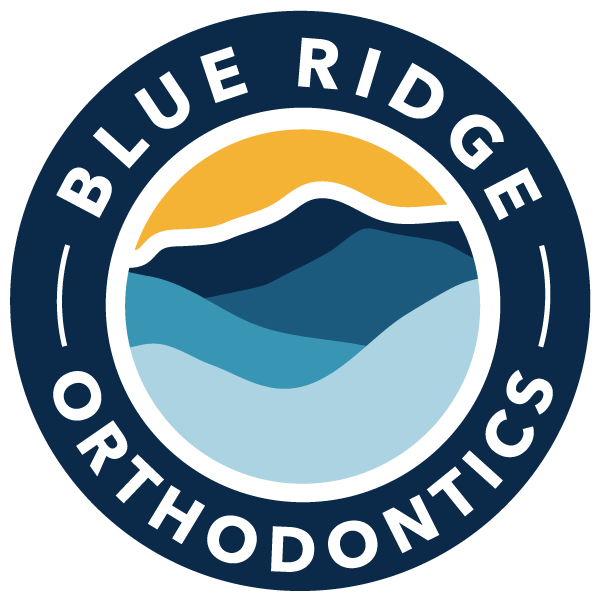Additional Orthodontic Appliances
Aside from retainers, Blue Ridge Orthodontics offers a wide range of other orthodontic appliances that help alter the way the mouth works. These can be especially beneficial in cases where our orthodontists need to correct specific bone problems for patients. These appliances are employed in combination with braces or another form of treatment when needed.
Elastics – the Rubber Bands
These little elastic rubber bands are used to move the teeth so that they fit together properly from top to bottom. During an appointment, you’ll be shown the desired configuration so that you can take them out when needed. The rubber band is attached to the bracket via their built-in “hook.”
Remember that the brackets of your braces merely serve as a tool for grabbing onto your teeth. The bulk of the movement we’ll accomplish during your course of treatment is achieved through wires and rubber bands.
Like other appliances, you can remove your rubber bands. This is necessary in order to eat and brush your teeth effectively. However, if you don’t follow your orthodontist’s directions precisely, the course of your treatment could take a lot longer to complete.
Here at BRO, we offer rubber bands in clear and a variety of colors!
Forsus Springs
While they may look a little intense, Forsus springs function much like elastic rubber bands to help align the upper and lower teeth. This orthodontic appliance is primarily employed when patients fail to follow the instructions for their rubber bands. Our orthodontists at BRO won’t often recommend Forsus springs first, since we typically attempt other methods of bite correction first.
The Forsus springs will be placed by your orthodontist and anchored to the upper molars via tubes and lower brackets via archwire. Since they can’t be removed by the patient, this appliance proves to be very effective.
Headgear
While not as common as it once was, orthodontic headgear can still play an important role when treating patients. This type of appliance is used to help guide the growth of the jaws and the face. When needed, headgear can help create space for teeth and move them into the proper positions. On the other hand, this appliance also can be used to prevent unwanted movement.
Like other forms of treatment, we have patients that report some extra tenderness for the first week or so after getting fitted with their headgear. This sensation will go away as you adjust to the appliance. Your headgear also will come with certain instructions that need to be followed closely, otherwise the treatment can take longer to complete.
MARA
For patients with a significant overbite, the MARA appliance can be extremely effective. Our orthodontists use it to expedite the forward growth of the lower jaw. At the same time, the MARA appliance also slows the forward growth of the upper jaw. The upper jaw can be expanded with this appliance if necessary, too.
Patients will generally have the MARA appliance in place for a full year. It usually is used in combination with braces – this will depend on the patient’s age and the problem that needs to be addressed.
Palatal Expander
For the patients that need their upper (maxillary) arch expanded, there is no orthodontic appliance more effective than the palatal expander. This device will widen (or “expand”) your upper jaw through gradual pressure it applies on the upper molars. The palatal expander uses a small screw that can be adjusted to achieve the desired expansion. Further instructions will be provided by your orthodontist.
One should note that the goal of this appliance is to move the bones (not just teeth) of the upper jaw apart. This means that we tend to use this appliance with younger patients as the length of treatment will be shorter and results more stable. In any case, the appliance will be kept in place for several months after desired expansion is reached in order to prevent future regression.
Separators
A separator is a small rubber or metal ring that gets placed between the teeth in order to separate them. This appliance is employed when there isn’t enough space to place a orthodontic band between a patient’s molars.
The separators are put in place for about a week, and they can cause some mild discomfort as the teeth are pushed apart. We’ve had patients describe the sensation as something akin to having a piece of food stuck between their teeth.
You’ll want to avoid eating chewy or sticky foods as these can dislodge the separator, which can cause delays with your treatment process. If you notice that one of your separators has fallen out, please call us immediately so we can get it replaced.
